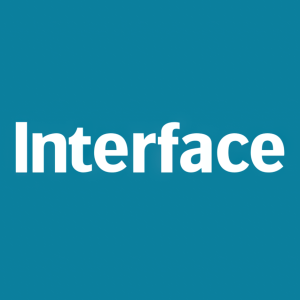Interface Unveils First-Ever Carbon Negative Rubber Flooring Prototype
Latest Innovation Demonstrates Company’s ‘All In’ Strategy to Store More Carbon Across Full Product Portfolio
Interface is showcasing the carbon negative prototype at BAU, the world’s leading trade fair for architecture, materials, and systems, taking place 13-17 January, 2025, in
The nora by Interface rubber flooring prototype has a carbon negative footprint when measured cradle-to-gate, storing more carbon than it emits from raw material extraction through manufacturing and packaging. In 2020, Interface launched Embodied Beauty™, the industry’s first carbon negative carpet tile collection, marking a significant milestone in the company’s 30-year sustainability journey. Leveraging learnings from this carpet tile innovation, Interface sourced and incorporated bio-based and carbon-storing raw materials into its rubber manufacturing to create an industry-first prototype.
“Bio-based materials like natural rubber have been an integral part of our nora rubber flooring for decades as we have sought to lower the carbon footprint of our products,” said Mario Kröger, Head of Research and Development for the nora brand. “Our experienced R&D team has made incredible strides to find the right mix of design and material innovations to achieve a carbon negative footprint – an important step in our journey to become carbon negative by 2040. We have measured the prototype’s cradle-to-gate carbon footprint and achieved carbon negativity, without offsets. This is an exciting achievement that shows our commitment to reducing environmental impacts across our full product portfolio to achieve our ambitious climate goals.”
Interface acquired nora systems in 2018 and, since then, has been working ardently to bring its expertise in low-carbon design and manufacturing to the rubber flooring category. Through manufacturing innovation, Interface successfully lowered the carbon intensity of its rubber portfolio by
“This prototype reaffirms our ‘all in’ commitment to repurpose former offset investments towards innovation projects that result in direct carbon reductions within our operations and across our supply chain,” said Liz Minné, Head of Global Sustainability Strategy at Interface. “More than ever, rubber is emerging as a priority flooring solution for commercial interiors, especially in healthcare, education, transportation, and other industrial segments. By offering our customers a carbon negative rubber solution in the future, we can help them reach their sustainability goals without compromising on design or performance benefits.”
Interface aims to make the carbon negative rubber product commercially available in late 2025. This proof-of-concept prototype will be further refined and prepared for commercialization over the coming months, ensuring it meets the highest levels of design, quality, and performance required for all Interface products.
To view the carbon negative rubber prototype, visit Interface at BAU – booth #310 in hall A6. To learn more about Interface’s sustainability journey, visit interface.com/allin.
About Interface
Interface, Inc. (NASDAQ: TILE) is a global flooring solutions company and sustainability leader, offering an integrated portfolio of carpet tile and resilient flooring products that includes Interface® carpet tile and LVT, nora® rubber flooring, and FLOR® premium area rugs for commercial and residential spaces. Made with purpose and without compromise, Interface flooring brings more sophisticated design, more performance, more innovation, and more climate progress to interior spaces. A decades-long pioneer in sustainability, Interface remains “all in” on becoming a restorative business. Today, the company is focusing on carbon reductions, not offsets, as it works toward achieving its verified science-based targets by 2030 and its goal to become a carbon negative enterprise by 2040.
Learn more about Interface at interface.com and blog.interface.com, nora by Interface at nora.com, FLOR at FLOR.com, and the company’s sustainability journey at interface.com/sustainability.
Follow us on Facebook, Instagram, LinkedIn, X, and Pinterest.
View source version on businesswire.com: https://www.businesswire.com/news/home/20250113156258/en/
Media Contact:
Christine Needles
Global Corporate Communications
Christine.Needles@interface.com
+1 404-491-4660
Source: Interface, Inc.







